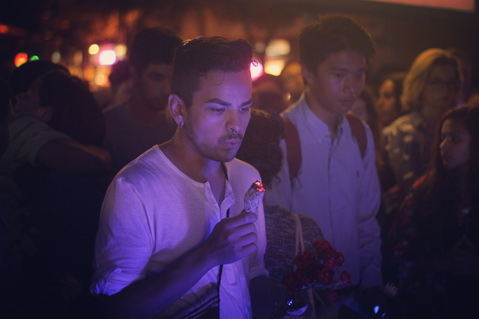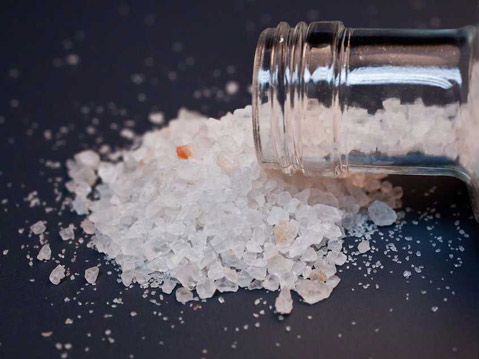Brain-Melting Drugs Wreak Havoc in Isla Vista
UCSB Health Officials Issue Warning About Synthetic Hallucinogens

Late in the afternoon on November 11, with school out for Veterans Day, a UCSB student in Isla Vista took what his friends said was LSD for the first time. As he wandered along Del Playa Drive, one of those friends worried for his safety and followed him. When he headed toward the cliffs, she tried to pull him back. But he broke from her grasp, walked to the edge, and jumped with his arms straight out in front of him. He landed on his chest and head 40 feet below. Paramedics found the 20-year-old bleeding from the mouth and trying to stand up. Sheriff’s deputies had to hold him down so he wouldn’t hurt himself any further.
The next day, UCSB medical director Dr. Mary Ferris issued a rare Health Alert to all students about an increase in specific “dangerous LSD-like drugs” in I.V. and on campus. These synthetic hallucinogens — referred to as “N-Bomb,” “Flakka,” and “bath salts” — are often sold as substitutes for LSD or mescaline, Ferris said, but are much more powerful and unpredictable. They can cause a condition called “excited delirium,” where the user experiences hyperstimulation and paranoia, which sometimes leads to violent aggression and self-injury, she said.
Four days after Ferris’s warning, Sheriff’s officials released the toxicology report in the October 11 death of 19-year-old UCSB student Andres Sanchez. He had taken N-Bomb and ketamine (an anesthetic with strong hallucinogenic properties) before he punched through a window in his apartment and bled to death from a deep cut in his arm, the report states. Witnesses that night said a psychotic Sanchez ran through Isla Vista’s streets, yelling gibberish, and that he was completely uncontrollable as they attempted to help him. One witness claimed he tried to have sex with her as she and her roommates waited by his side for an ambulance.
Santa Barbara authorities say the recent increase in synthetic-drug use in I.V. and around the county — especially among college-aged students this fall — follows a troubling nationwide trend. The local uptick hasn’t been dramatic, Sheriff’s Office spokesperson Kelly Hoover said, but certainly notable. Generally found as powders, liquids, soaked into blotter paper, or laced onto something edible, the illegal and addictive designer drugs act on serotonin receptors in the brain. They’re often more amphetamine-like compared to other hallucinogens, and the highs can last just a few hours or linger for several days.

“These new drugs have produced much more serious and irreversible effects that are shocking in their potential lethality,” Ferris explained in a later interview. Seizures, heart stoppage, kidney failure, and temperatures of 105-106 degrees have been reported in some cases. N-Bomb, which gets its name from its chemical tag of 25I-NBOMe, and which is sometimes also called “25I” on the streets, is especially unsafe, she said. It’s super potent in even “tiny microgram amounts,” so ingestion can easily lead to an overdose. It was discovered by a German PhD candidate in 2003 and made illegal in the U.S. in 2013.
Flakka is produced from a compound known as alpha-PVP, synthetically derived from the drug cathinone. The source of cathinone is the khat plant, which grows in parts of the Middle East and Somalia. It was labeled a Schedule 1 drug by the U.S. DEA in early 2014. Bath salts refer to the overall family of emerging drugs that contain one or more chemicals related to cathinone.
Sergeant Dan McGrew with the Santa Barbara Police Department said he and other narcotics officers don’t come across the drugs within city limits too often. Heroin and meth remain much more common, he said. But the encounters they have had are certainly memorable, he explained. Just the other day, McGrew assisted a patrol officer who had been called by a man who said his college-aged son had taken some kind of hallucinogen and was trying to walk into traffic. McGrew said it took four people to pin the guy down. “He was literally out of his mind,” he said.



